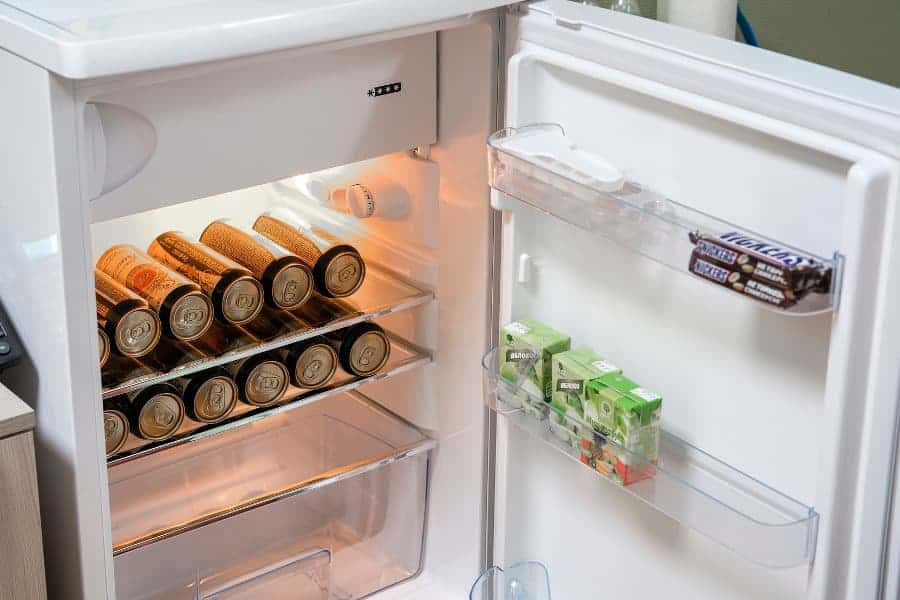When it comes to setting up a small office, dorm room, or even a tiny home kitchen, a mini fridge is often an essential appliance. It’s compact, convenient, and helps keep your beverages and perishables cool without occupying the space a full-sized refrigerator would. However, one of the common questions we get here at TheKitchenApplianceDad.com is about the power consumption of these compact refrigerators: How many watts does a mini fridge use?
In this post, we’ll dive deeply into the typical wattage of mini fridges, factors that affect their power consumption, and how you can calculate the cost of running one. This knowledge will help you make an informed decision when purchasing a mini fridge and managing its operation efficiently.
The size of a mini fridge is a primary factor influencing its power usage. Generally, the larger the fridge, the more wattage it requires to cool its contents. Mini fridges can range in size from as small as 1.7 cubic feet to as large as 4.5 cubic feet or more.
The design and quality of insulation also play a crucial role in determining how much energy a mini fridge consumes. Better insulation means the fridge can maintain its internal temperature more efficiently, using less energy over time.
The temperature setting on the fridge’s thermostat significantly affects power usage. Setting your mini fridge to a colder temperature will require more energy to maintain that temperature.
Older models of mini fridges tend to be less energy-efficient compared to newer ones. Wear and tear over time can also lead to decreased efficiency, as seals may wear out and compressors may have to work harder.

Mini fridges typically use between 50 and 100 watts of power during regular operation. However, this is a rough average, and the actual wattage can vary based on the model and the factors mentioned above.
For instance, a small 1.7 cubic foot mini fridge might use around 50 watts, while a larger 4.5 cubic foot model could use up to 100 watts or slightly more. It’s important to check the specific wattage for the model you are considering, which is usually listed in the product specifications or the user manual.
To understand how much it costs to run your mini fridge, you need to convert watts into kilowatt-hours (kWh), which is what your electricity bill measures.
Calculation Formula:
Wattage×Hours Used Per Day÷1000=Daily kWh consumption
Example:
If your mini fridge uses 80 watts and runs continuously throughout the day:
80 watts×24 hours÷1000=1.92 kWh/day
To find out the monthly energy consumption, multiply the daily kWh by the number of days in a month:
1.92 kWh/day×30 days=57.6 kWh/month
You can then multiply this by the cost per kWh on your electricity bill to find out how much your mini fridge costs to run each month.
Ensure your mini fridge isn’t placed near a heat source like an oven or direct sunlight, which can cause it to work harder to maintain the internal temperature.
Keep the coils clean and ensure the door seals are tight to prevent cold air from escaping.
Set the thermostat to an optimal temperature. The U.S. Department of Energy recommends setting your refrigerator to 37-40 degrees Fahrenheit for efficient operation.
Consider purchasing a mini fridge that has an ENERGY STAR rating, which indicates it meets energy efficiency guidelines set by the U.S. Environmental Protection Agency.
By understanding and managing the factors that affect the energy consumption of your mini fridge, you can enjoy the convenience it offers without incurring high electricity costs.

